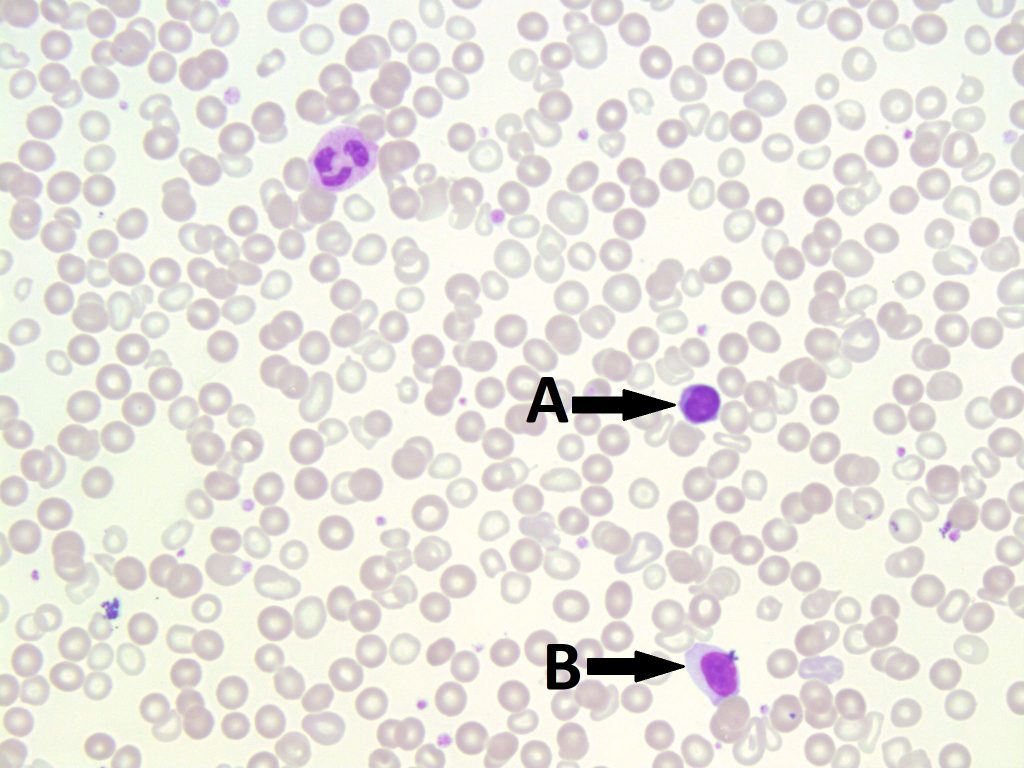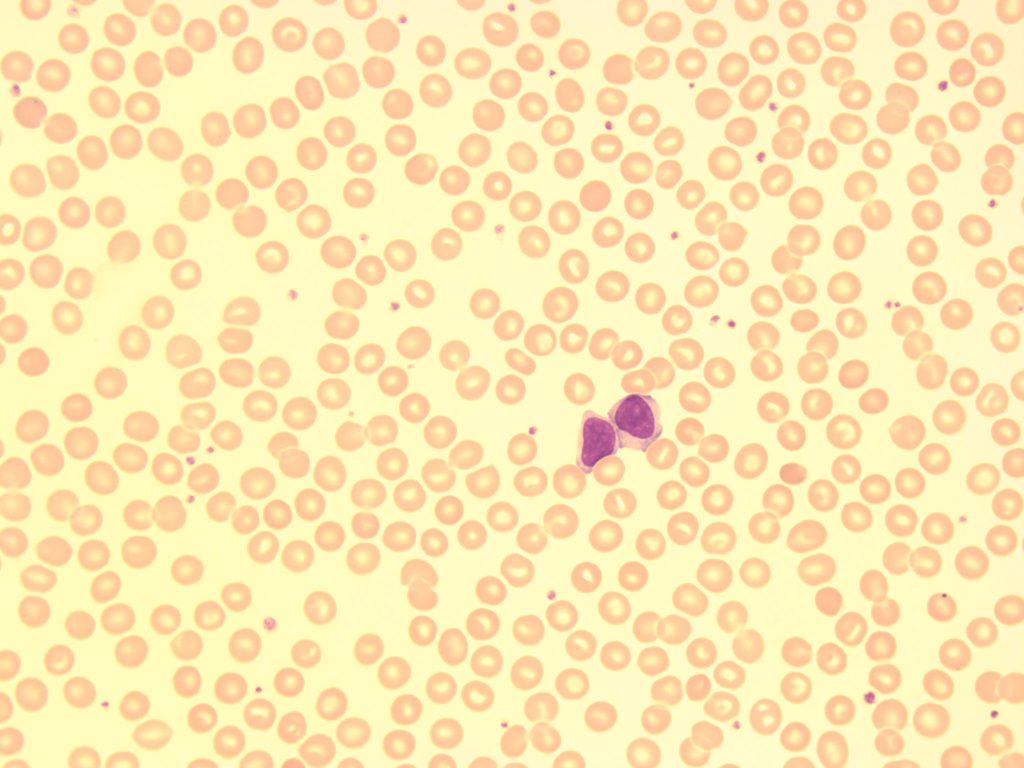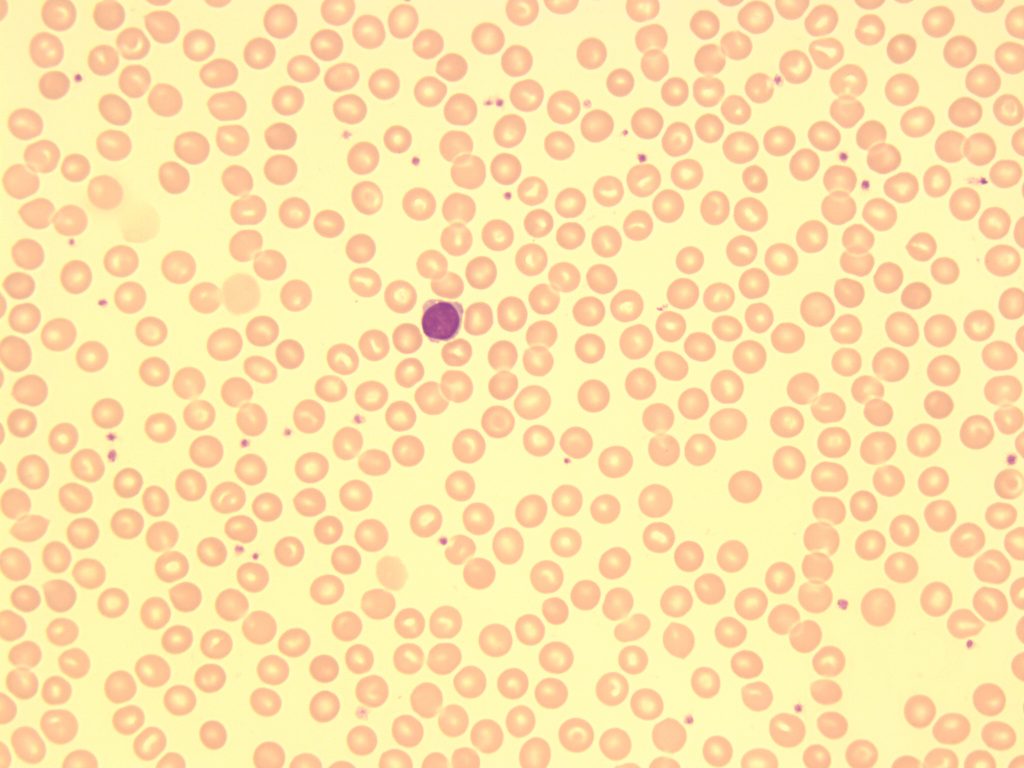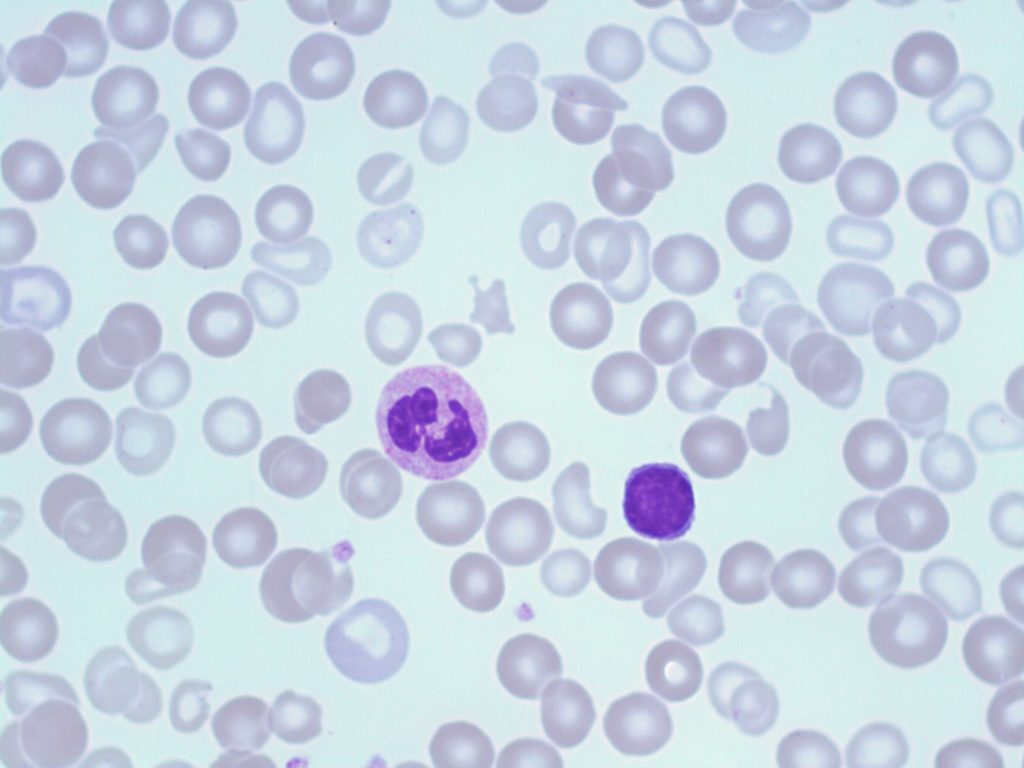10.2: Lymphocytes
- Page ID
- 38820
- An image from a peripheral blood smear showing a small lymphocyte (A) and a large lymphocyte (B). 50x oil immersion. From MLS Collection, University of Alberta, https://doi.org/10.7939/R3JH3DH6Q
- An image from a normal peripheral blood smear showing two large lymphocytes. 100x oil immersion. From MLS Collection, University of Alberta, https://doi.org/10.7939/R30Z71C10
- An image from a peripheral blood smear showing a small lymphocyte. 50x oil immersion. From MLS Collection, University of Alberta, https://doi.org/10.7939/R3H12VP79
- An image from a peripheral blood smear with a neutrophil (left) and a small lymphocyte (right). 100x oil immersion. From MLS Collection, University of Alberta, https://doi.org/10.7939/R3930P92Z
Notes: Can be characterized as being small or large depending on the amount of cytoplasm. Small lymphocytes are more uniform in appearance whereas large lymphocytes have a variable appearance.1
Nucleus-to-Cytoplasm Ratio: 5:1 to 2:1 1,2
Nucleoli: May be visible 1,2
Nucleus:1,2
Round, oval, or indented
Dark purple, dense chromatin (heterochromatin)
Cytoplasm:1,2
Pale blue
Scant to moderate
Vacuoles may be present
Granules:1,2
Large: Azurophilic granules may be present
Small: typically lack granules (agranular)
Normal % in Bone Marrow: 5-15% 2
Normal % in Peripheral Blood: 20-40% 2
Lymphocyte Lineage
Lymphocytes can be characterized into two cell types depending on the site of cell maturation:
1. B Cells
Lymphocytes that mature in the bone marrow. These cells are lymphocytes that are able to mature into plasma cells and take part in antibody production.1
Specific surface markers:1,3
CD10, CD19, CD20, D21, CD22, D24, CD38
2. T Cells
Lymphocytes that mature in the thymus and lymphoid tissues. When these cells become activated, they are able to take part in cell-mediated immunity.1
Specific surface markers:1,3
CD2, CD3, CD4, CD5, CD7, CD8, CD25
References:
1. Williams L, Finnegan K. Lymphocytes. In: Clinical laboratory hematology. 3rd ed. New Jersey: Pearson; 2015. p. 122-43.
2. Rodak BF, Carr JH. Lymphocyte maturation. In: Clinical hematology atlas. 5th ed. St. Louis, Missouri: Elsevier Inc.; 2017. p. 79-88.
3. Czader M. Flow cytometric analysis in hematologic disorders. In: Rodak’s hematology clinical applications and principles. 5th ed. St. Louis, Missouri: Saunders; 2015. p. 543-60.






